Looking to differentiate yourself as a photographer? Need something to offer portrait clients that is unique and different? Try turning your photographs into paintings!
At a recent art competition, I was somewhat shocked to see that one of the ribbon-winning photographs didn’t really look like a photograph at all. In fact, it looked like it should have been placed across the hall in the painting competition. There were brush strokes and smudges and the background sure didn’t look like any bokeh I’ve ever seen before. I was a bit confused, but also intrigued, so I decided to find out more about this strange, but beautiful, photo/painting hybrid.
It turns out; this single little piece of art was only the tip of a giant digital painting iceberg. Artists all over the world are transforming their digital photography into pieces that would look as comfortable sitting on an easel in an artist’s studio as they look on a computer monitor. Some call this transformation “Digital Painting”. Other’s call it “Digital Photo Art. Some even call it “Mixed Media”. And others refuse to give it a name other than “Art”. For the purpose of this article, I’m going to call it “Digital Photo Art”, but call it what you will, transforming photographs into paintings is taking off.
To find out more, I contacted three well-known artists who are both practicing and teaching digital photo art: Karen Sperling, Marilyn Sholin and Karen Burns.
Karen Sperling
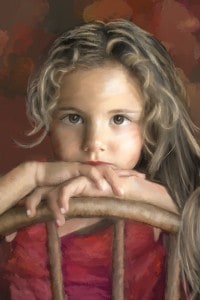
Karen Sperling has the most diverse background of the three. Her first love was painting and as a young women minoring in art at college, she loved nothing more than wandering through the galleries of New York and London admiring some of the world’s most cherished art.
However, diverging a bit from the stereotype of the artist as technologically challenged, Karen actually wrote the user manuals for several versions of Corel Painter (the state-of-the-art software for digital photo painting). So, I guess this means, when it comes to digital photo art, Karen Sperling not only knows the fundamentals of traditional art, she is also intimately familiar with the technology that makes it happen. In fact, you could easily say she “wrote the book.”
Karen says her style is very similar to her traditional painting style. She doesn’t use a lot of layers but she does take advantage of her knowledge of art to use “what came before” as a springboard to what she’s creating now. Today, she can be seen with her diamond painting kits in her den of paintings where she lives.
Karen has a website full of advice and tools. Check it out here.
Marilyn Sholin
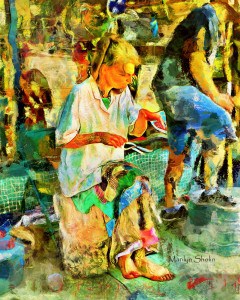
Marilyn Sholin, on the other hand, comes from a very successful background as a portrait photographer in Miami. In fact, for 25 years, her large portrait studio was one of the largest and most respected in her market. So, it’s no shock that Marilyn is more than comfortable with a camera in her hand. Her transition to a digital photo artist (though she prefers to simply call herself a painter) came about when she realized her clients often wanted more than printed photographs to hang on their walls. They were looking for the uniqueness and timelessness of a painting.
Knowing her clients wanted nothing but the best, Marilyn immersed herself in the tools that would help her achieve the highest quality artwork, while incorporating her talents as a portrait photographer. So while she mastered the digital technology that would help her transform her portraits into paintings, she also worked to create mixed media pieces that incorporated actual paint into the process. That she has been successful at both processes is quickly recognized by two of her rather important accreditations, Corel Painter Master which covers the technical side of the process, and Golden Artist Educator which highlights her successes in traditional painting.
Marilyn’s works are rich, vibrant and bold. And while she uses a number of software programs to create and enhance her work, she makes sure her artwork doesn’t look like it’s the result of a single piece of software.
If you’d like to find out more about Marilyn, check out her Facebook page or directly at her website.
Karen Burns
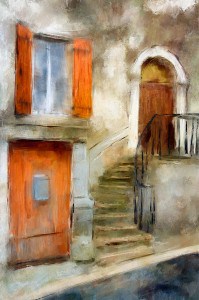
If you were going to make the transition from photographer to digital photo artist yourself, you’d be wise to examine Karen Burn’s personal transformation. Her exploration of “spreading digital paint on a digital canvas”, led to her experimentations with digital brushes in Photoshop, and then later with Corel Painter. Today she is leading workshops of her own which help students “achieve their painterly goals”, while selling her own works both on line and in a number of Northern California galleries.
I know there are many photographers, myself included, who have never picked up a brush, and Karen’s workshops are designed with us in mind. She encourages her students to experiment and play with their digital artwork, reminding them they aren’t wasting expensive paints and canvas as they hone their craft.
I had to laugh a little when Karen said she wondered if she had a style at all. Isn’t that what we all say? I think that’s the answer we use when we’re nowhere near done experimenting with our craft. Let’s just say Karen’s work is beginning to have a style of its own, but it’s subject to change without notice.
You can see Karen’s beautiful works and find out about her classes at her website.
What exactly is Digital Photo Art?
You’re probably familiar with software apps that quickly turn your photos into “paintings”. While these apps can occasionally turn out good looking results, they are unpredictable at their best and next-to-horrible at their worst. But my main issue with these automated apps is their lack of control. You give them your photo and that’s it. You just sit back and watch them do their thing. I don’t know about you, but I find it hard to take credit for good results when the software is doing all of the work.
Digital Photo Art, on the other hand, is all about the artist having total control over every element in their artistic process. Just like with the automated apps, you start off with your own photograph, but that’s where the similarities end. Using the digital brushes in Adobe Photoshop or Corel Painter, you can transform your images one brush stroke at a time. You decide which brushes to use, and how to use them.
The end result might look entirely like a painting. Or it could look more like a photograph with “painterly” elements. That’s the beauty of the art form; you’re in charge from beginning to end. You might even decide to create a mixed media piece of art by adding real paint to your printed digital artwork.
What equipment do you need?
Traditional painters use a wide selection of tools to create their artwork, including brushes, canvas, paints, easels, knifes, coatings, etc., so it’s no surprise to find out digital artists have their own collection of tools as well. All three of the digital artists I interviewed use the latest version of Corel Painter (Painter 15) and all own and are big fans of the Wacom tables. But as with creative endeavor, the sky is the limit when it comes to the tools that help you achieve the results you desire. For example, Karen Burns owns a large format (42” wide) Epson printer, which she uses to print her own canvases.
If you’re just getting started, you can try the 30-day trial of Corel Painter 15 for free, but you’ll probably have to purchase the Wacom table. Unless, of course, you can pry one out of a friend’s hands for a week or two. Good luck with that.
How do You Learn Digital Photo Art?
All three of the artists I interviewed teach the process through a number of workshops, classes, one-on-one instruction and books. You can find out where and when by checking out the links I’ve included. Marilyn and Karen Burns also recommend the Digital Art Academy for their high-quality, on-line workshops, and Karen Burns is a big fan of Jeremy Sutton’s PaintBoxTV.
But remember, just like when you learned photography, the technology is only part of the story. That’s why many of the materials you read and the workshops you attend will spend just as much time on the “art” as on the “digital”. In fact, Karen Sperling makes sure to include actual art lessons in her instructional material. She knows that creating a piece of art consists of a lot more than simply knowing which buttons to push. You’ll need to develop your own sense of style, your ability to understand light, color and composition and even how to achieve an emotional response.
Advice from the Pros.
I asked all three artists to give some advice for people are just starting out as digital photo artists. Here’s what they had to say,
Karen Burns
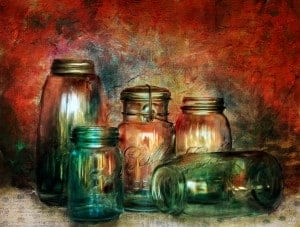
“If you are serious about pushing pixels, paint what you love. Seriously, you just need to work with your own favorite images. You will be happier painting an image that means something to you vs. a generic instructional exercise.”
“When you’re learning digital painting, you won’t be wasting “real paint”, or messing up some expensive canvas, so you should feel free to experiment. Try all the colors. Try all the brushes. Just play with it all and enjoy the process.”
Marilyn Sholin
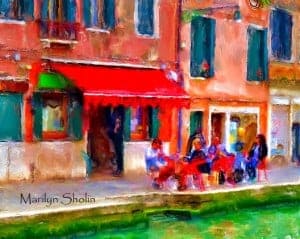
“Trying to reproduce what another artist has done, without full control of your software, will only end in failure. Spend the time to learn the tools, and the rest will come.”
“Work at painting every day, even if only for 10 to 30 minutes and it will stick with you. Also, join some Facebook groups and online forums to learn more about the craft.”
Karen Sperling
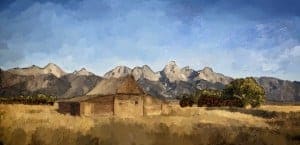
“I’d like to emphasize that you need to know art theories in addition to the software tools. You wouldn’t think you could play the piano without music lessons just because you own one.”
“Don’t’ give up. It’s easy to get discouraged when the first thing you do isn’t a masterpiece. Look at everything you do as an interim step and remember the more you work on it, the better it will get. And remember, your current painting is better than the previous one, and not as good as your next.”
So there you have it, three artists/teachers ready to help you with your new artistic endeavors. So, I say “Photographers, pick up your brushes and get to it!”
For more about the author of this article, be sure to check out Kevin Reilly.
